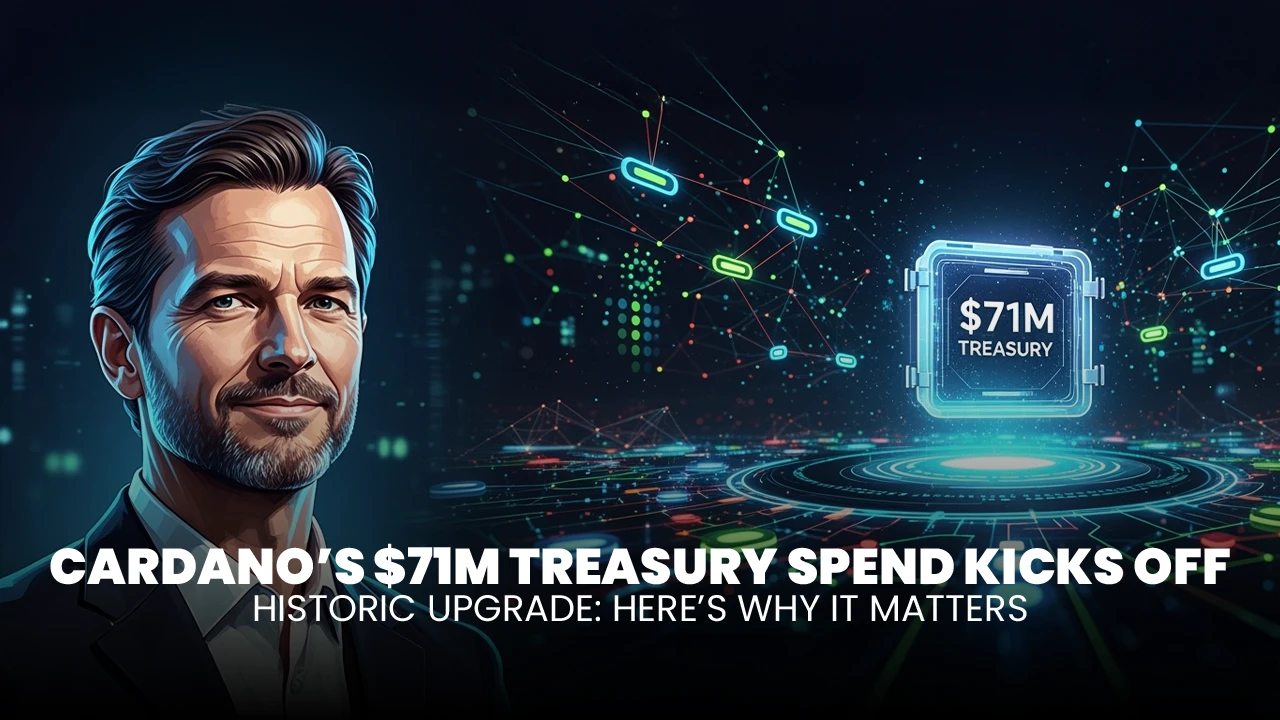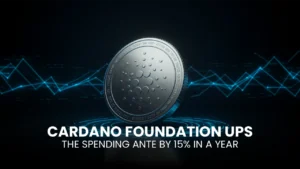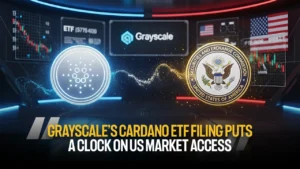Cardano’s $71M Treasury Spend Kicks Off Historic Upgrade: Here’s Why It Matters

In a historic decision on blockchain self-governance, the Cardano community voted to approve a proposal that sees 96 million ADA, or approximately $70 to $71 million, of its treasury deployed to fund significant development upgrades. The vote, which commanded over 74% approval, marks the first time that Cardano core protocol work has ever been funded directly from ADA holders.
This funding unlocks a string of necessary upgrades to Cardano’s performance, interoperability, and developer experience. The upgrades will be delivered on a milestone basis by Cardano’s core development team, Input Output Engineering (IOE), as managed by the governance body Intersect.
A New Era of Grassroots-Funded Development
This historical vote sets a new standard for decentralized ecosystem development, where the community itself controls the direction of investment in the core protocol. A multi-year timeline of clear milestones is set out in the proposal. Payments are to be released over time, subject to delivery milestones, with controls by Intersect through audit committees, public reporting, and smart contracts.
ALSO READ: Cardano Hits 300K Smart Contracts as Bitcoin Crumbles Under Market Pressure
IOE, formerly an acronym for IOHK, has provided quarterly engineering reports, as well as quarterly financial reports, to provide transparency at every stage of execution.
What characterizes this type of governance is the smoothness with which it blends into Cardano’s structure at the technical level. The Delegated Proof of Stake foundation on which the blockchain has been designed allows ADA holders the capacity to secure the network through staking as well as direct its development through votes, such as that one without copying the system of Proof of Work, where mining companies dominate network direction.
Cardano Funding Most Ambitious Roadmap Ever
These upgrades, to be financed from this treasury allotment, span the entire range of technological advances:
- Hydra: A layer 2 protocol enabling ultra-fast, cheap transactions, as required for real-time, high-frequency applications.
- Mithril: Enhances bootstrap speeds of networks and facilitates lightweight clients, which increase accessibility.
- Ouroboros Leios: A development of Cardano’s consensus algorithm that is intended to augment transaction throughput dramatically but retain a decentralised system.
- Project Acropolis: Introduces a module-based node architecture to enable greater configurability and developer onboarding.
- Nested Transactions: Another notable enhancement, enabling richer functionality of smart contracts as well as greater interoperability between chains.
ALSO READ: TRON Beats Ethereum in Transfers Amid an 83% Jump in Cardano ETF Approval Odds
Additional performance upgrades include decreased RAM usage, faster sync times, and reduced stake pool operator operational costs.
These upgrades are aligned with the performance goals made feasible by Cardano’s Delegated Proof of Stake protocol. By removing the energy penalties and scaling limitations of earlier blockchain platforms, DPoS allows Cardano to scale efficiently and sustainably, a key contributor to enabling such a large number of upgrades as part of its pipeline.
Governance in Action: Citizen Voices and Accountability
Of the votes cast, 200 voted in favor, six voted against, and seven abstained, providing an overwhelming consensus from ecosystem members. ADA holders voted to pass the upgrades, but more significantly, solidified the decentralized decision-making principles that have defined Cardano development.
IOE EVP of Community and Ecosystem Tim Harrison called it a “first in blockchain history” that witnesses primary protocol upgrades funded directly by the end users of the network themselves. Cardano’s founder, Charles Hoskinson, also said the same, thanking the community for funding the future phase of the project while highlighting transparency, commitment, and deliverability.
While broadly supported, the proposal wasn’t without discussion. There was concern from some members of the community that the budget size was too large, and future proposals should engage smaller funding phases. Another proposal from the Cardano Technical Steering Committee was entered but wasn’t chosen, which showed the ecosystem becoming more capable of making complex decisions openly, democratically.
ALSO READ: Cardano Gets a Swipe at Apple Pay Amid TRON’s Regulatory Power Play on Nasdaq
First in Blockchain History: What Follows Next?
This vote marks a watershed event for Cardano. For the first time, the community has funded core upgrades from its treasury, marking an enduring level of confidence in the technology as well as the governance systems propelling it. Through work by IOE, overseen by Intersect, and the community providing direction on funding calls, Cardano is entering a decentralized development phase that has never existed before.
By running on a Delegated Proof of Stake system, Cardano has extended validation of transactions and provided funding of the protocol in a completely democratic manner. What emerges is a more nimble, community-driven, and transparent blockchain than has ever existed before. As Hydra, Mithril, and Project Acropolis are brought into existence, the ecosystem finds itself on the cusp of unprecedented technical development, driven not by central edicts but by the voice of its end-users themselves.
Frequently Asked Questions (FAQs)
- What was approved in the treasury vote?
96 million ADA (~$71M) was approved to fund core Cardano upgrades. - Who is responsible for delivering the upgrades?
Input Output Engineering (IOE) will lead development, overseen by Intersect. - What upgrades are included?
Hydra, Mithril, Ouroboros Leios, Project Acropolis, and Nested Transactions. - How did the community vote?
ADA holders voted via on-chain governance using Cardano’s DPoS system. - What is Intersect’s role?
Intersect ensures transparency, tracks milestones, and oversees fund use.
Glossary of Key Terms
- ADA: Cardano’s native coin used for voting, staking, and transaction fees
- Treasury: A community-controlled, decentralized ADA reserve that finances ecosystem development through on-chain voting for governance decisions
- Hydra: Layer-2 protocol that enables fast, scalable, and affordable transactions for dApps
- Mithril: Minimizing full node sync times through technology while supporting lightweight client functionality
- Ouroboros Leios: A softfork designed to increase Cardano’s capacity to handle transactions without compromising decentralization
- Project Acropolis: A collection of modular nodes to simplify configuration and offer developer choice
- Nested Transactions: A development for complex smart contract execution and enhanced interoperability
- Input Output Engineering (IOE): Cardano’s blockchain system’s parent development company
- Intersect: A community-driven governance body that manages Cardano’s on-chain development and treasury activities
- Delegated Proof of Stake (DPoS): It is a consensus system where token holders delegate their stake to validator nodes that form blocks and secure the system




